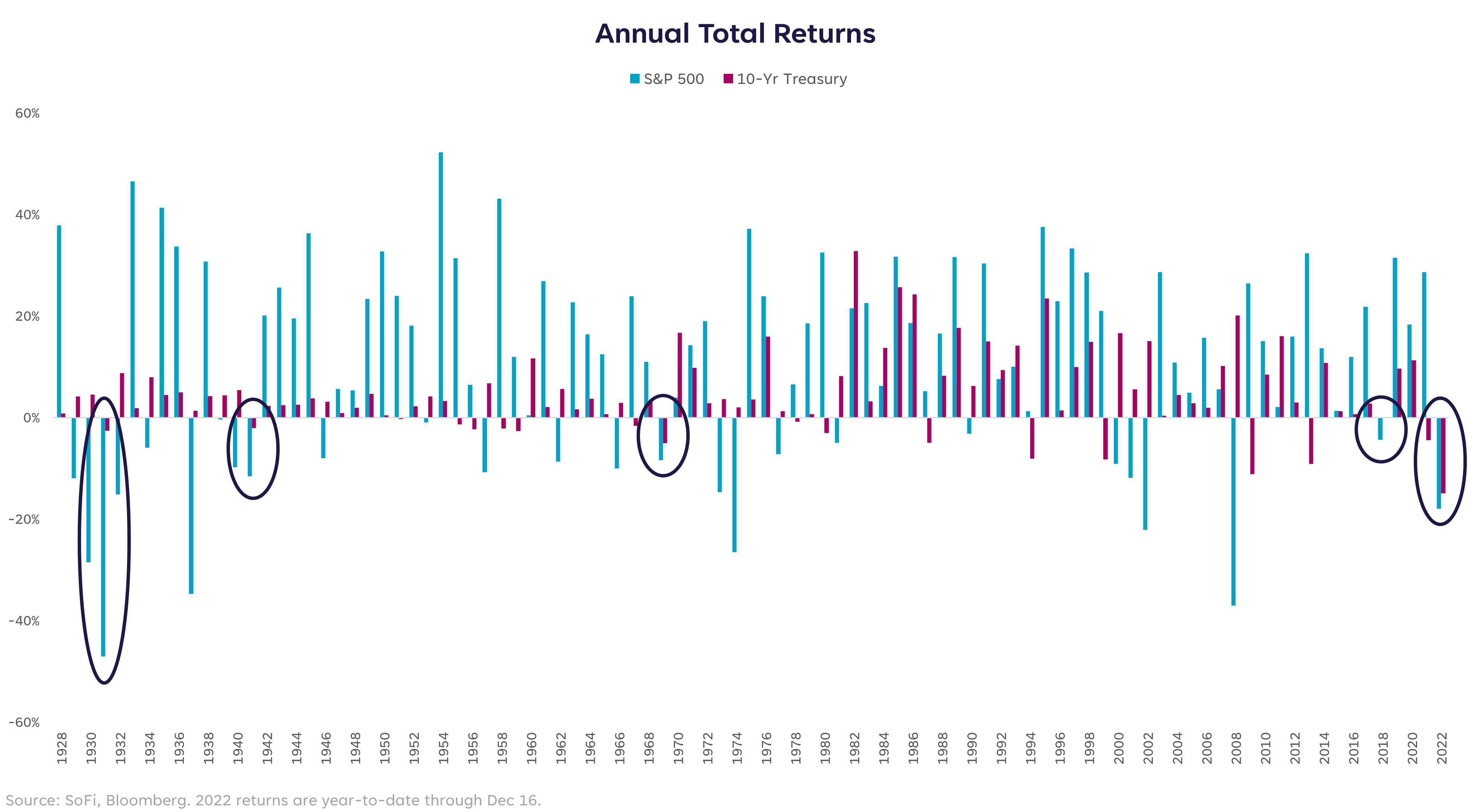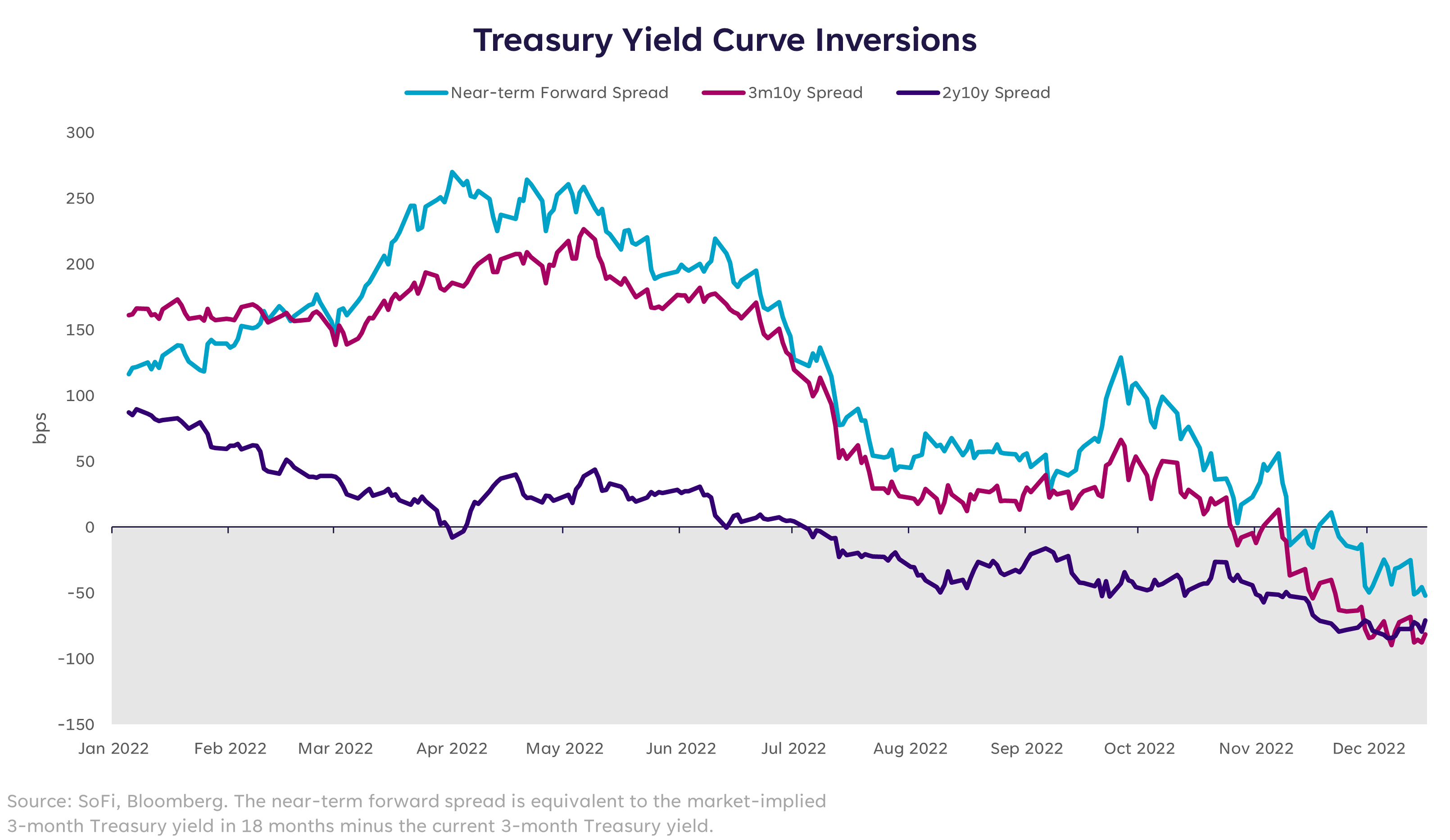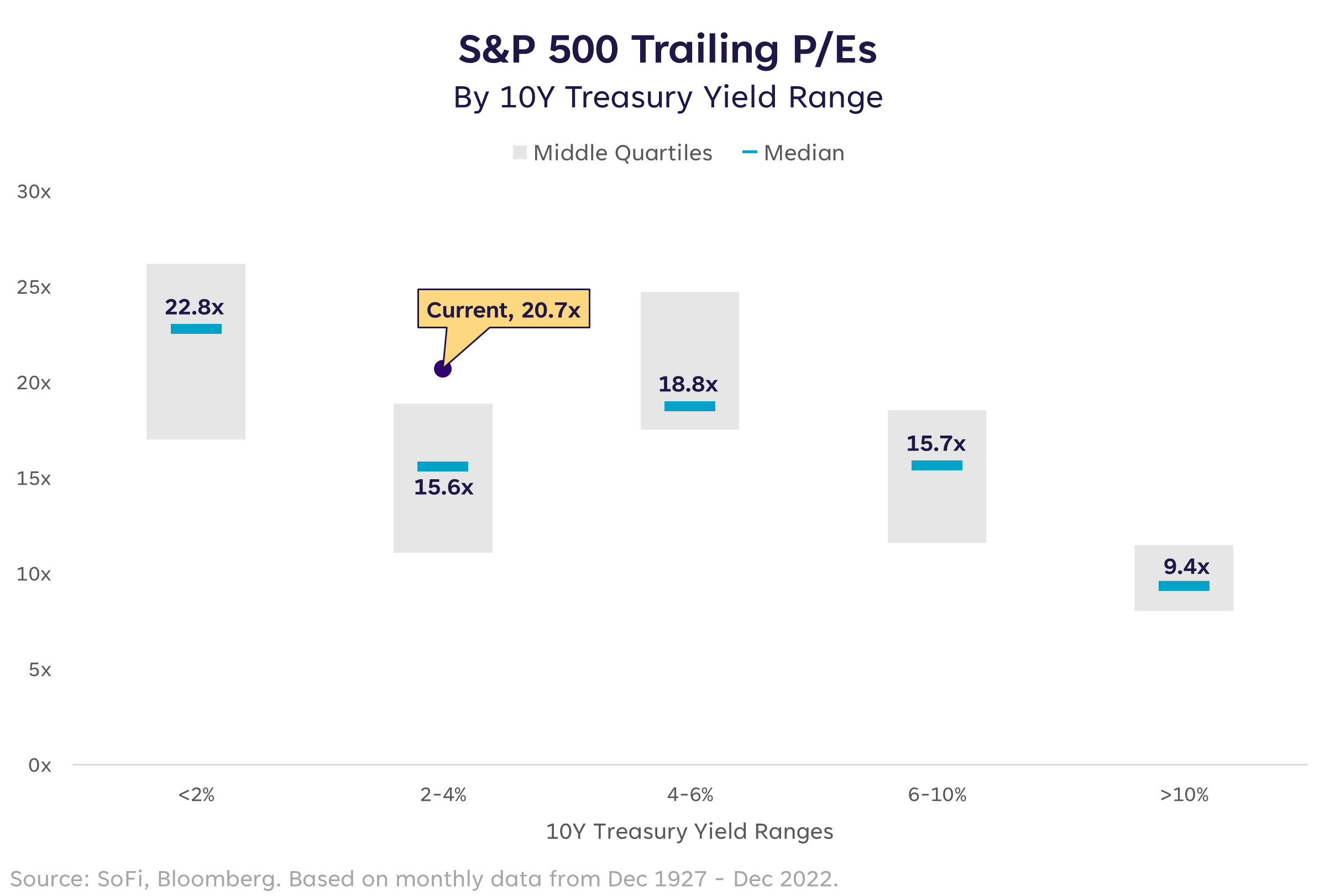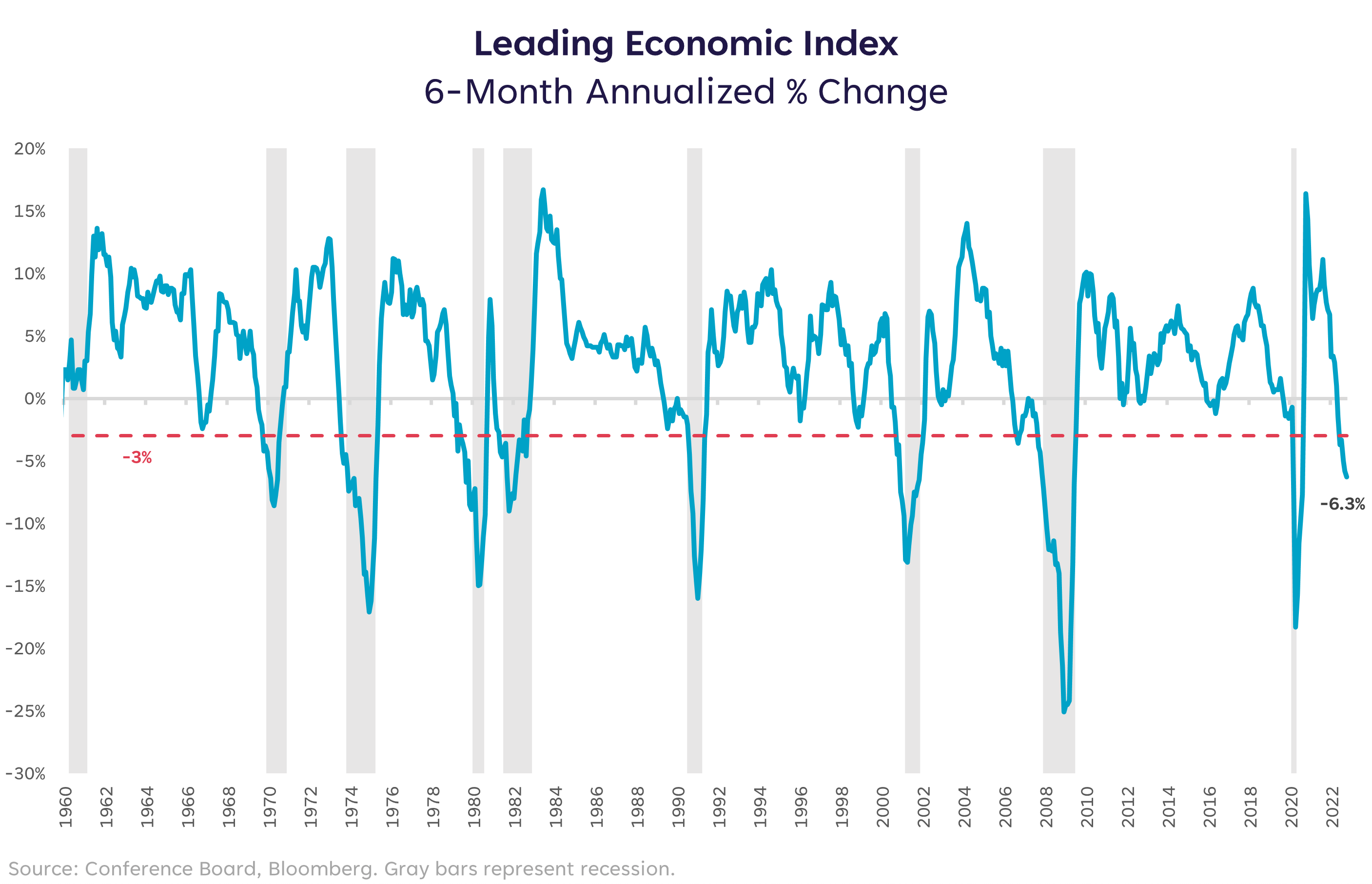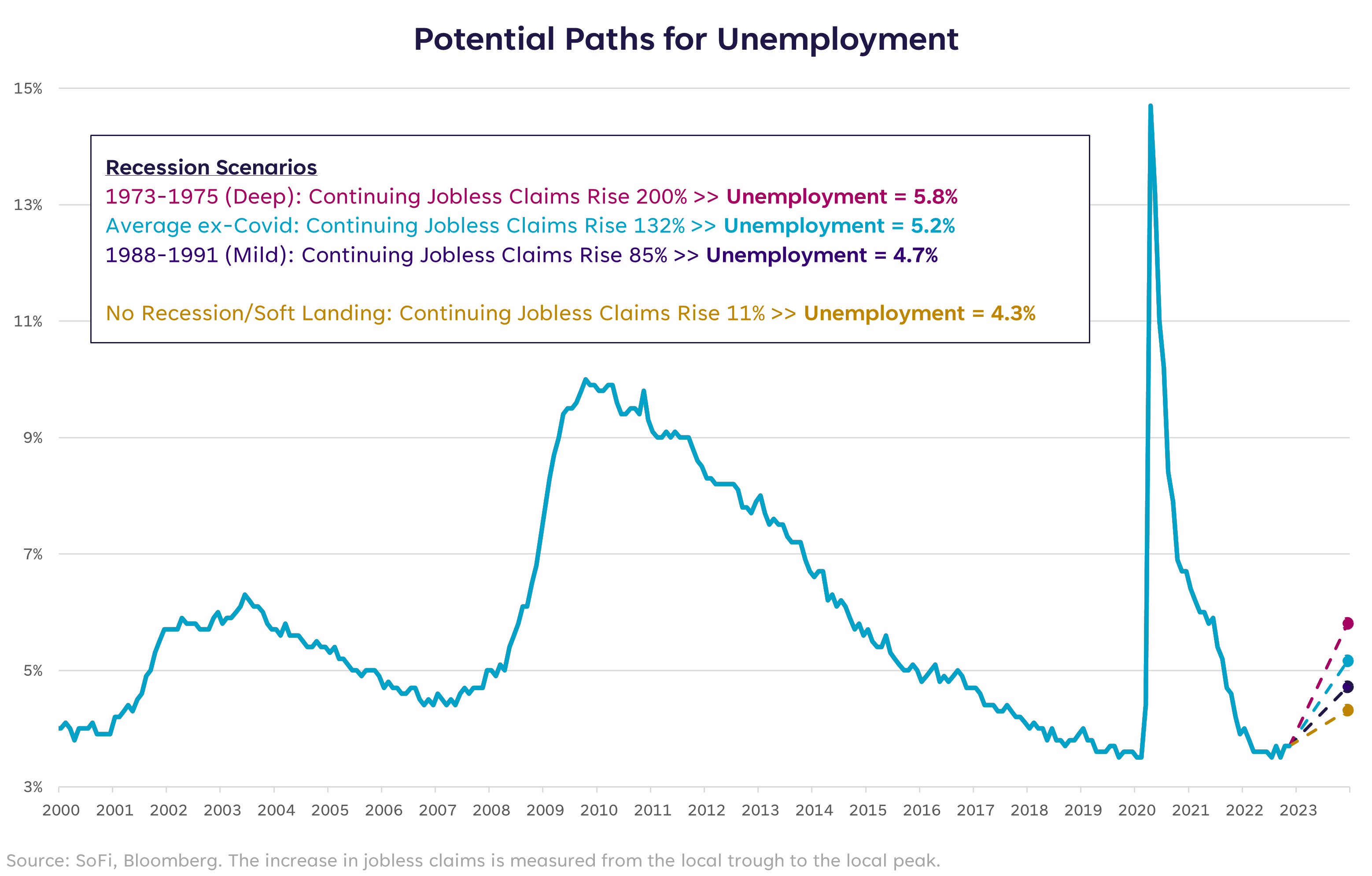2023 Outlook: This Ends One Way or Another
By: Liz Young Thomas · December 19, 2022 · Reading Time: 12 minutes
A new year is supposed to be a time of fresh starts, enthusiasm for what’s to come, and resolutions to do something different. But starting something new suggests that we’ve recently finished something old. Despite what the calendar says, we are certainly not done with what we started in 2022. Inflation continues to prove itself a worthy opponent, markets remain limited by resistance levels, and investors are still searching for things that either confirm or deny a looming recession. In 2023, this ends one way or another.
Rest in Peace, 2022
Unless you’re a glutton for punishment, I think I speak for most of us in saying I’m looking forward to closing the book on this year. I could list all of the challenges we faced, but in the interest of writing space and my own mood, I’ll leave it at this: equity markets entered bear territory, the 10Y Treasury saw its worst year ever, and the Fed squeezed liquidity with a vise. This resulted in only the fifth year since 1928 when both stocks and bonds were negative.
Like most things, there are two sides to every story. We can look at the negative — nothing worked, diversification failed us, our net worth fell, and markets are broken. Or we can look at the positive — the tough part is behind us, we’ve shaken out the excess froth, we’re making good yields on cash, and bonds are more attractively priced than they’ve been in decades. I’ll take an even more simplistic view and say the chances of us having another year of double-digit declines in both stocks and bonds are very, very slim.
This year was one of calling peaks: peak inflation, peak Treasury yields, peak Fed hawkishness, peak oil prices, and peak uncertainty. With many of those peaks likely in the rearview, it’s safe to say we did some good work in 2022 on both the market and economic fronts. Unfortunately, we’re not done yet. The question of whether we’re in for joy or pain in 2023 can be answered by finding out how the ending occurs, how quickly we draw to a close, and whether we really did pass peak uncertainty.
Respect the Cycle
If there is one point I continue to reiterate it’s this one: we must respect the cycle. The cycle I’m talking about is the business cycle, with the typical phases shown below:
The length of each phase and the time between them always varies — but rest assured, the cycle repeats. Determining where we are in this continuum is the puzzle. And even if we know the answer with some degree of certainty, the unpredictable element is how long we’ll stay at that point before moving into the next phase.
There are some clear characteristics of each phase, which I won’t make an exhaustive list of here, but much of the current data indicates we are in the “late cycle” phase. This occurs after peak expansion (remember, 2022 has been a year of peaks) and is typically characterized by high or rising inflation, monetary tightening to control said inflation, a flat or inverted yield curve, and the beginning of a decline in cyclical indicators such as housing or the labor market. Every single one of these boxes has been checked.
The bond market in particular is shouting “late cycle” from the rooftops, with curve inversions galore.
If we look to the stock market, we’d expect “late cycle” to result in a defensive posture, with “safe” sectors outperforming riskier ones. Using June as the point when inflation (CPI) peaked, the sector performance since then sets an interesting tone. Healthcare is the only classically defensive sector that sits in the top half, while most of the others are cyclical. Meaning, the stock market doesn’t definitively agree with a “late cycle” narrative, and mixed signals still abound.
Those mixed signals have driven multiple bear market rallies that failed to materialize into new bull markets. They’ve also brought the volatility index (VIX) briefly below 20, but not allowed it to stay there longer than a few days before popping back up. And they’ve kept us in this purgatory between recession/no recession for what feels like an agonizingly long time.
Calling All Spades
People don’t like to hear words of caution, and they certainly don’t like to hear a message that suggests downside in markets or pain to come in the economy. But if I edited my honest opinions just to limit criticism from optimists, I wouldn’t be doing my job. So let me call a spade a spade: I think the bond market has this right, and the economic indicators reinforce that message. We’re late cycle. The next spade in my hand says: I don’t see how we get back to early cycle without a recession. I just don’t think we’ve seen enough evidence of it to convince market valuations yet.
Here’s an illustration of where the trailing price-to-earnings (P/E) ratio is in relation to corresponding 10Y Treasury yield ranges. Relative to history, the current P/E of 20.7x is in the 80th percentile of observations — well above even the top end of the median range.
Forward P/Es tell a similar story. The current forward P/E is 17.0x, which is just slightly below the 10-year average of 17.2x. Moreover, five of those 10 years were spent at a zero-bound fed funds rate, and the average 10Y Treasury yield was 2.1%. The fed funds rate is at 4.5% today, and the 10Y Treasury yield is ~3.5%. Not the same environment by any stretch.
As the name of the ratio says, P/Es depend on the level of earnings. When prices (P) are rising and earnings (E) are steady or falling, stocks are enjoying what’s called “multiple expansion” — a.k.a. rising for reasons unrelated to company performance. One could argue that markets had been riding a multiple expansion train ever since rates went to zero, and promptly exited that train when rates began to rise. The train isn’t even selling tickets anymore.
Earnings estimates for 2023 have fallen steadily over the last few months, now sitting at $224/share, which represents no growth over 2022 earnings, but I still think expectations are too high. Those estimates are down from a peak of $252/share in April, and I expect downward revisions to keep rolling in for at least another quarter.
With that backdrop, in order to be bullish on the stock market you have to believe that multiple expansion will carry us forward. I don’t believe that. At least not before we give back some of this P/E multiple and get more in-line with what bond markets are telling us.
Not Sold Separately
One thing I’ve learned as a strategist is that my thesis has to be internally consistent. That said, in order to be consistent with my previously stated take — that I don’t see how we can reset the business cycle without a recession — I also don’t see how we can confirm a recession and expect equity valuations to stay this high.
Which means we can’t have it both ways. We can’t expect inflation to come down by way of reducing demand without seeing collateral damage to consumer spending. We can’t expect demand and pricing power to come down without seeing collateral damage to corporate profits. Add to those forces to downward earnings revisions and there’s likely to be collateral damage to the U.S. economy.
A commonly used indicator of economic health is the index of Leading Economic indicators (LEIs). If we track the 6-month annualized percent change in the index, we can see if it’s moving in a definitive direction over time. The chart below shows what’s happened recently, with the latest 6-month change at -6.3% — meaning LEIs have been steadily falling over that period. Not-so-fun fact: this reading has never fallen below -3% without a recession to follow.
The most recent market bottom in October saw a forward P/E of 15.3x. Valuations may not need to get quite that low again — especially since the earnings (E) have come down, which mathematically allows for a higher P/E on the same price (P). But unfortunately, I don’t think we’re quite done with market drawdowns for this cycle. On the bright side, if we are nearing a recession, the market would theoretically drop before the economy hits a trough. That’s exactly why I expect one more plunge before the imbalances are corrected.
Finding “The One”
One of the hottest debates of 2022 was how to define “recession.” The generally accepted definition before now was two consecutive quarters of negative GDP growth. We met those conditions in the U.S. during the first half of the year with Q/Q GDP at -1.6% for Q1 ‘22 and -0.6% for Q2. But did it count as a real recession? After all, the drag that brought us to negative territory was largely due to trade imbalances (imported more than we exported) and a reduction in inventory builds. Those items matter, to be sure, but the largest proportion of our economy is consumption, which remained positive for both periods.
Even if we say it counted as a technical recession, it wasn’t broad enough to reset the business cycle (see “Respect the Cycle” above). It was more likely the whiff of recession before the real recession.
As such, if we do enter a recession in 2023, it would technically look like a double-dip recession, much like what occurred in the late 1970s/early 1980s. If at first you don’t succeed, try, try again?
That period and today are eerily similar with inflation as the primary enemy. The difference is that this Fed is determined to not make the same mistakes as that Fed, which one could characterize as a “stop/start” approach to rate hikes. Jerome Powell has committed to steadily increasing rates, if not purposely overtightening, in order to defeat inflation.
The conundrum we face is that most recessions are preceded by a rate hiking cycle — and the idea that we will get through an aggressive hiking cycle and somehow manufacture a soft landing is a bit fantastical, in my view.
But how do we know when the real recession is here, and if it’s “the one” that will finally reset the cycle? That’s where the labor market comes in.
Through almost all of 2022, many have claimed that strength in the labor market is the golden ticket that will help us avert recession in 2023. That could end up being the case, but I’m skeptical that jobs data will stay this strong. The labor market is notoriously one of the last indicators to break in economic downturns, and this cycle is likely no exception. Companies are less willing to lay off workers than ever before because of how difficult it’s been to find new ones. But as wage growth continues to eat into profits and slower demand eats into revenue, pressures mount.
Continuing jobless claims have started to rise, but job openings remain elevated and the unemployment rate is historically low. I expect that story to shift over the course of the next few months. Jobless claims are likely to increase, job openings are likely to fall as companies lay out their 2023 plans, and a slow uptick in the unemployment rate could materialize.
In an attempt to model how this may play out in different scenarios, we’ve made some assumptions on unemployment based on past recessions. The chart below shows what could happen if history repeats itself and the economy loses a similar amount of jobs as prior scenarios.
Without declaring whether I believe a recession will be deep, average, or mild, the good news is the worst we are modeling is an unemployment rate that remains below 6%. The bad news is the length of time it typically takes for this to play out (from trough to peak unemployment) is anywhere from 26-53 months. Woof.
Although some economic indicators bounce back quickly after downturns, labor tends to be more stubborn. Nevertheless, in order to determine if and when “the one” has arrived, I believe labor data will be our irrefutable evidence.
Fama, French, and Finding Opportunities
What does it mean for markets, what happens to my investments, where is the opportunity, and where are the monsters hiding?
I wrote earlier that the likelihood of having another year with double-digit declines in stocks and bonds is highly unlikely. So we’ve got that going for us. I also firmly believe that this indecisive state of “recession/no recession” is worse for markets than simply having a recession and answering the question. Not to mention, the average S&P 500 return 12 months out from a recessionary market bottom is 49%. Not too shabby.
One way to look at opportunities in 2023 is via factor investing. There is an old asset pricing model called the Fama French model. If you’ve never heard of it, that’s because for the better part of the last two decades it hasn’t really worked. But I believe it’s about to take center stage.
The basic premise of the model suggests that value stocks should outperform growth stocks, and small-cap stocks should outperform large-cap stocks. These two factors — the value factor and the size factor — have not produced attractive results through an era of extremely low interest rates and perpetual multiple expansion of large-cap tech stocks. But I think the tides of opportunity will shift back in favor of Fama French in 2023.
Part of that is based on the Fed’s commitment to keeping rates at restrictive levels until we make substantial progress on inflation, which could be a while. That means rates are likely to stay elevated for a large chunk of 2023 and the era of rate-driven multiple expansion is over.
Another part is based on my expectation for a recession in 2023. If and when the market comes to grips with that reality, particularly given that this would be an inflation and rate hike driven recession, large-cap growth stocks may not be the darlings of the next bull market. As such, if markets correct again, I would find value in classic early-cycle sectors and asset classes such as: Financials, Industrials, Semiconductors, Consumer Discretionary, small-caps (particularly small-cap value).
In the bond market, I expect a widening of credit spreads (i.e., lowering of prices) in both investment grade and high yield bonds in concert with an equity market decline. High yield bonds may then become quite attractive from a price and yield standpoint, but be careful not to load up too much on risk if there’s a great deal of stocks already in the portfolio.
Lastly, the much discussed Treasury market. After a year where Treasuries did nothing to offset equity risk, they once again can serve as risk management tools. The opportunity in Treasuries is now, while yields are still elevated and before a recession is confirmed.
TL;DR
For those of you who don’t speak in acronyms, TL;DR = too long didn’t read. I hope you read it, but if you didn’t, here’s the gist: I think the bond market is right, a recession is coming, and stocks will soon trade closer to reasonable valuations. I also believe that we need to reset the business cycle and start anew. If that begins to materialize, I’ll become bullish and position for early cycle markets.
Until then, watch the data with eyes wide open, seek out data that proves you wrong in order to stay balanced, and rest up before the new year begins. We’re in for another adventure.

Communication of SoFi Wealth LLC an SEC Registered Investment Adviser. Information about SoFi Wealth’s advisory operations, services, and fees is set forth in SoFi Wealth’s current Form ADV Part 2 (Brochure), a copy of which is available upon request and at www.adviserinfo.sec.gov. Liz Young is a Registered Representative of SoFi Securities and Investment Advisor Representative of SoFi Wealth. Her ADV 2B is available at www.sofi.com/legal/adv.
